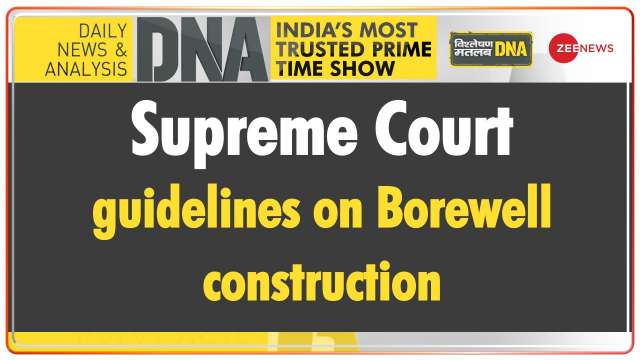Borewell Guidelines
Borewell drilling is a common practice in India and other parts of the world, but it comes with a set of guidelines that must be followed to avoid accidents. With the Supreme Court issuing guidelines for borewell construction, it is essential that we become aware of these guidelines to prevent accidents and ensure that we are doing our part to preserve groundwater resources, which are rapidly decreasing.
Pain Points Related to Borewell Guidelines
Countless accidents have occurred due to the lack of compliance with borewell construction guidelines. Children falling into the open borewells is one of the most tragic incidents that can happen, and it also highlights the importance of following these guidelines.
Target of Borewell Guidelines
The target of borewell guidelines is to prevent accidents and ensure that groundwater resources are used in a responsible and sustainable manner. The guidelines provide a set of rules that must be followed during the construction process, such as the depth of the borewell, the diameter of the casing, and the use of appropriate materials.
Summary of Borewell Guidelines
Following borewell guidelines is crucial to avoid accidents, protect groundwater resources, and ensure sustainable water usage. These guidelines include rules for the depth of borewell, diameter of the casing, use of appropriate materials, and distance from nearby structures. Compliance with these guidelines can prevent accidents and ensure that we are using groundwater resources in a responsible and sustainable manner.
Borewell Guidelines and Their Target
One of the essential guidelines for borewell construction is the depth of the borewell. A minimum depth of 20 feet is required for drinking water use, while a depth of 100-200 feet is necessary for agricultural purposes. Similarly, the diameter of the casing must be at least 4 inches to prevent soil caving in and contamination of water. It is also essential to maintain a distance of at least 50 feet from nearby structures to avoid contamination of groundwater and soil.

I remember when my father was getting a borewell installed for agricultural purposes. Initially, the contractor suggested a depth of only 60 feet, but my father insisted on following the guidelines and went with the suggested 100 feet. The water quality was better, and the yield was higher than other borewells in the area where guidelines were not followed.
Borewell Maintenance Guidelines and Their Target
Maintenance of borewells is equally crucial to ensure the longevity and efficiency of the well. Among the maintenance guidelines, flushing the well regularly, disinfecting it with chlorine, removing debris, checking the pump regularly, and repairing any leaks are some of the critical measures that need to be taken.

During my childhood, I remember one of our borewells stopped working, and upon inspection, it was discovered that debris had accumulated in the well, causing the pump to break down. My father learned the importance of regular maintenance and ensured that the borewells were regularly flushed and debris-free, which helped in extending the life of the well.
Borewell Decommissioning Guidelines and Related Keywords
Borewells can dry up, become contaminated, or become obsolete over time, and improper closure of these wells can pose a significant risk to the environment and public health. Borewell decommissioning guidelines provide a set of rules to be followed when decommissioning a borewell, such as removing all equipment, filling the well with cement, and capping it with a secure metal cover.

Recently, our neighbor decommissioned their borewell, and I was impressed to see the precautions they took to ensure that the process was done safely and responsibly. They hired a professional to remove all equipment and filled the well with cement while ensuring that no debris was left behind.
Question and Answer
Q:
What is the importance of following borewell guidelines?A: Following borewell guidelines is essential to prevent accidents and ensure that groundwater resources are used in a responsible and sustainable manner.
Q:
What are some of the essential guidelines for borewell construction?A: Some of the essential guidelines for borewell construction include maintaining a distance of at least 50 feet from other structures, using appropriate materials, maintaining a minimum borewell depth, and casing diameter.
Q:
How can borewell maintenance ensure the longevity and efficiency of the well?A: Flushing the well regularly, disinfecting it with chlorine, removing debris, checking the pump regularly, and repairing any leaks can help ensure the longevity and efficiency of the borewell.
Q:
What are some of the precautions to be taken when decommissioning a borewell?A: Some of the precautions to be taken when decommissioning a borewell include removing all equipment, filling the well with cement, and capping it with a secure metal cover.
Conclusion
Following borewell guidelines is essential to prevent accidents, protect groundwater resources, and ensure sustainable water usage. Compliance with these guidelines can prevent accidents and ensure that we are using groundwater resources in a responsible and sustainable manner, contributing to a better future for generations to come.
Gallery
HOUSE CONSTRUCTION IN INDIA: VAASTU GUIDELINES | DIGGING WELL / BOREWELL

Photo Credit by: bing.com /
Supreme Court Guidelines On Borewell Construction

Photo Credit by: bing.com /
Borewell Guidelines | PDF

Photo Credit by: bing.com /
Borewell Accidents Continue To Happen Despite SC Issuing Preventive

Photo Credit by: bing.com /
Telemetry System For Borewell Water Flow Monitoring As Per Cgwa

Photo Credit by: bing.com /